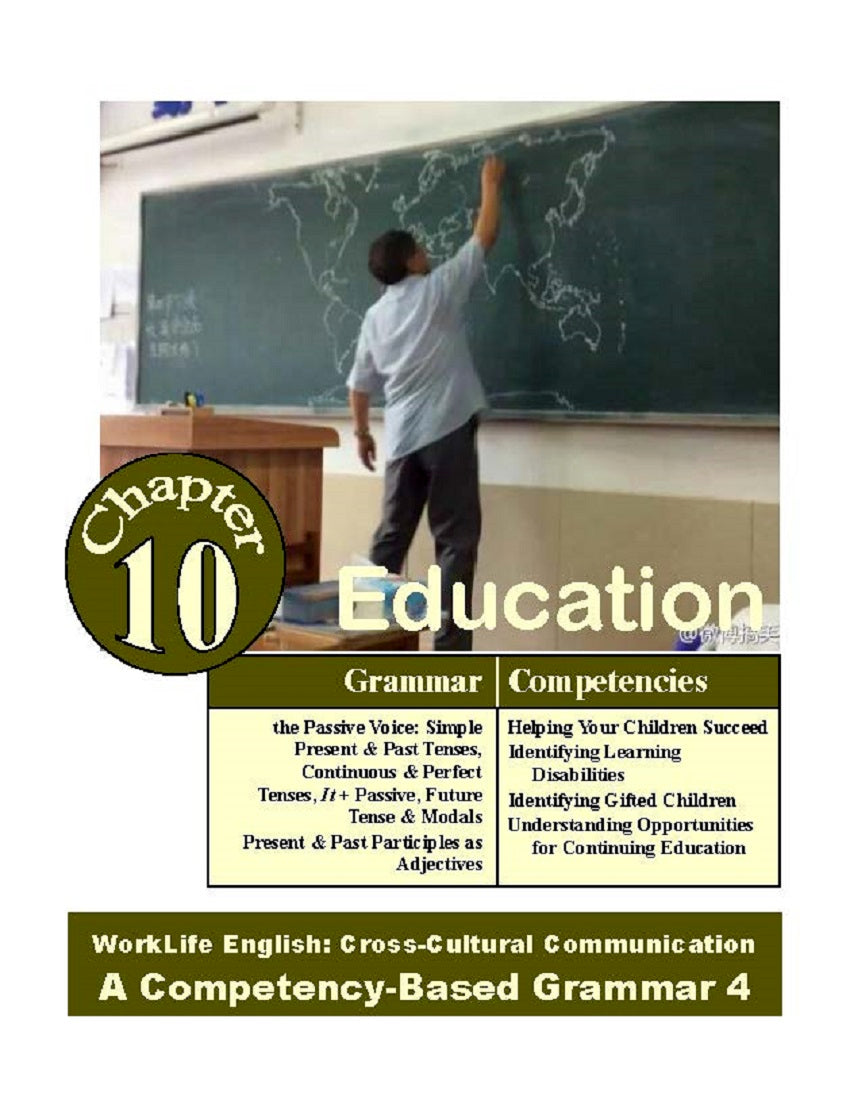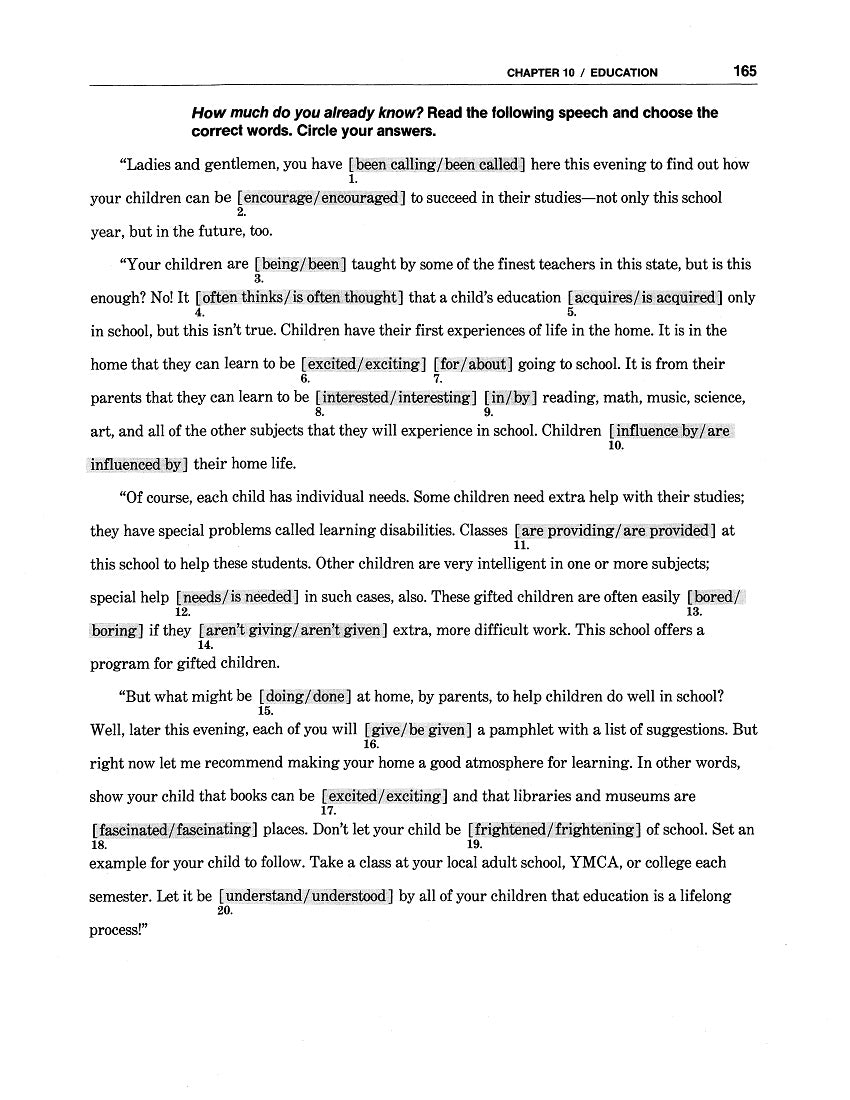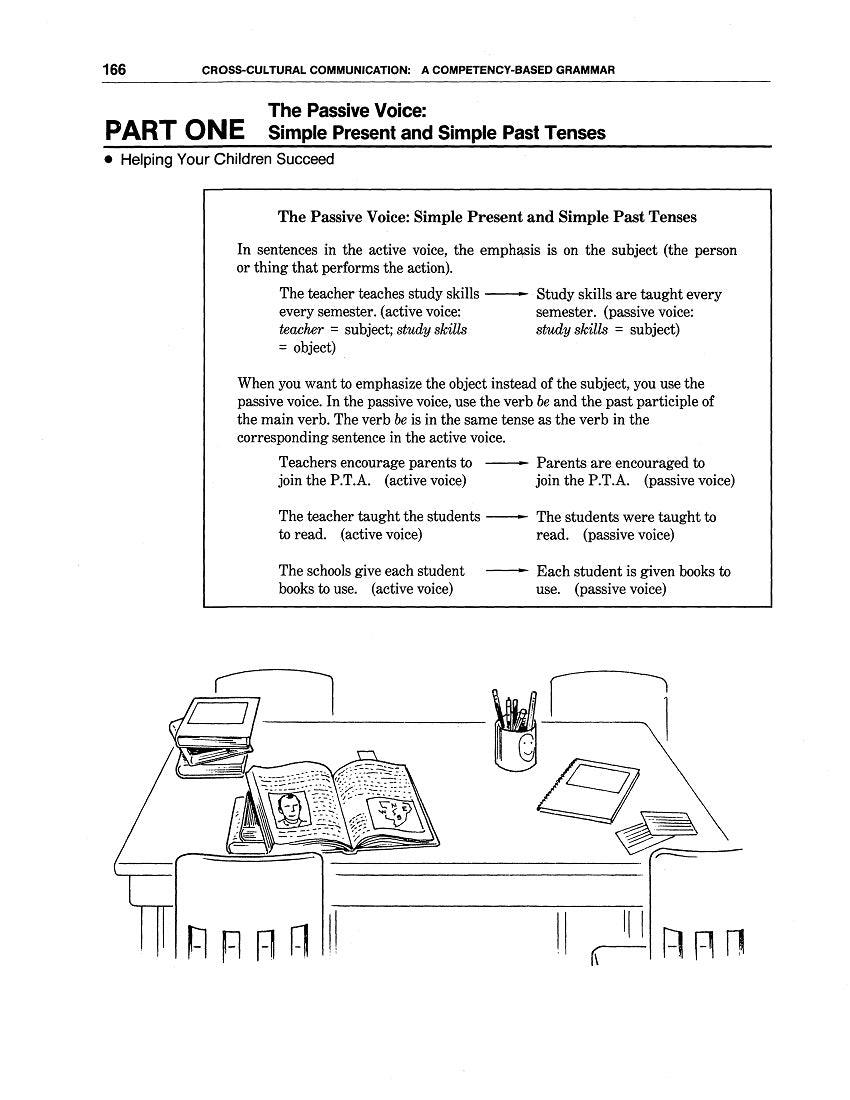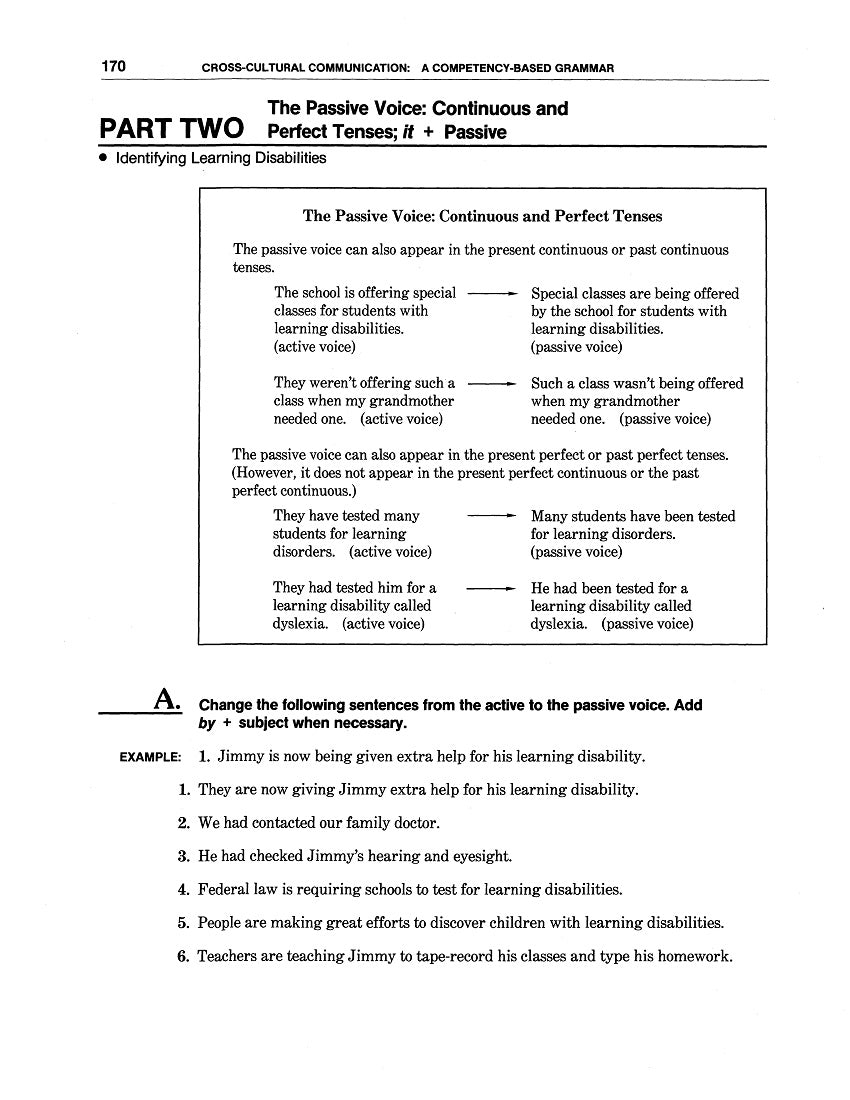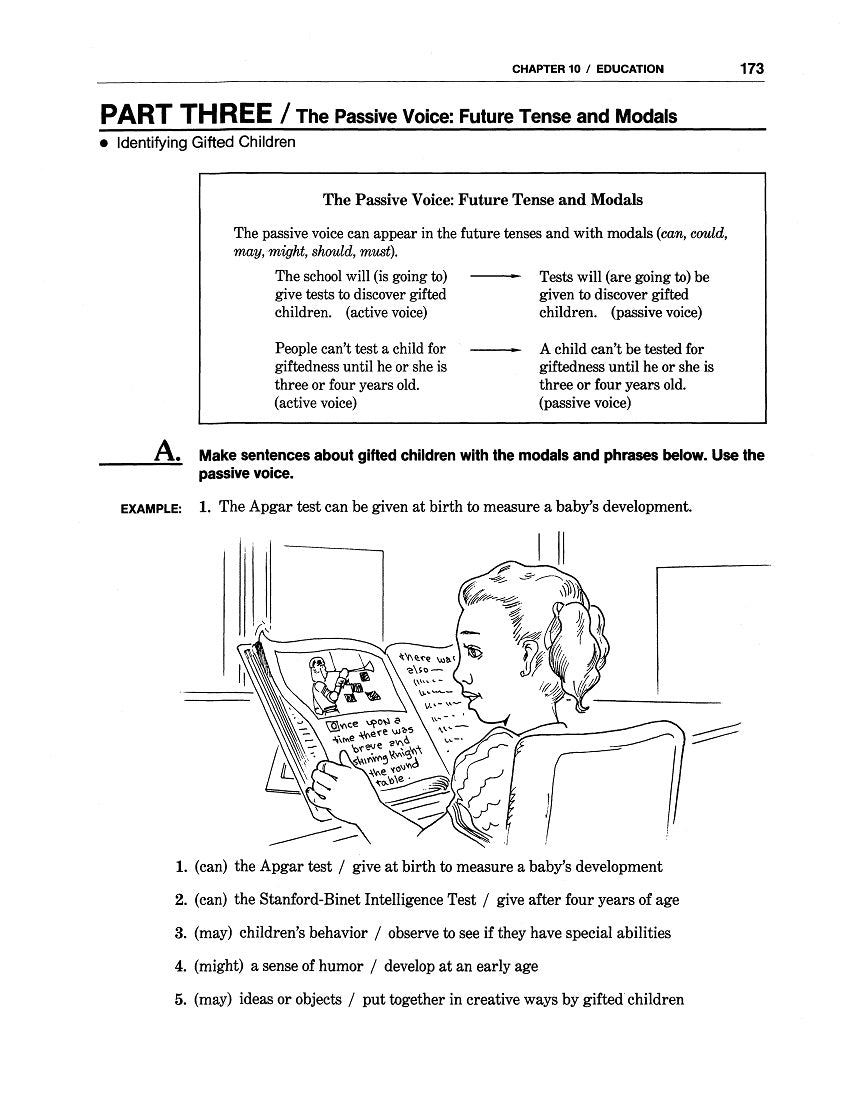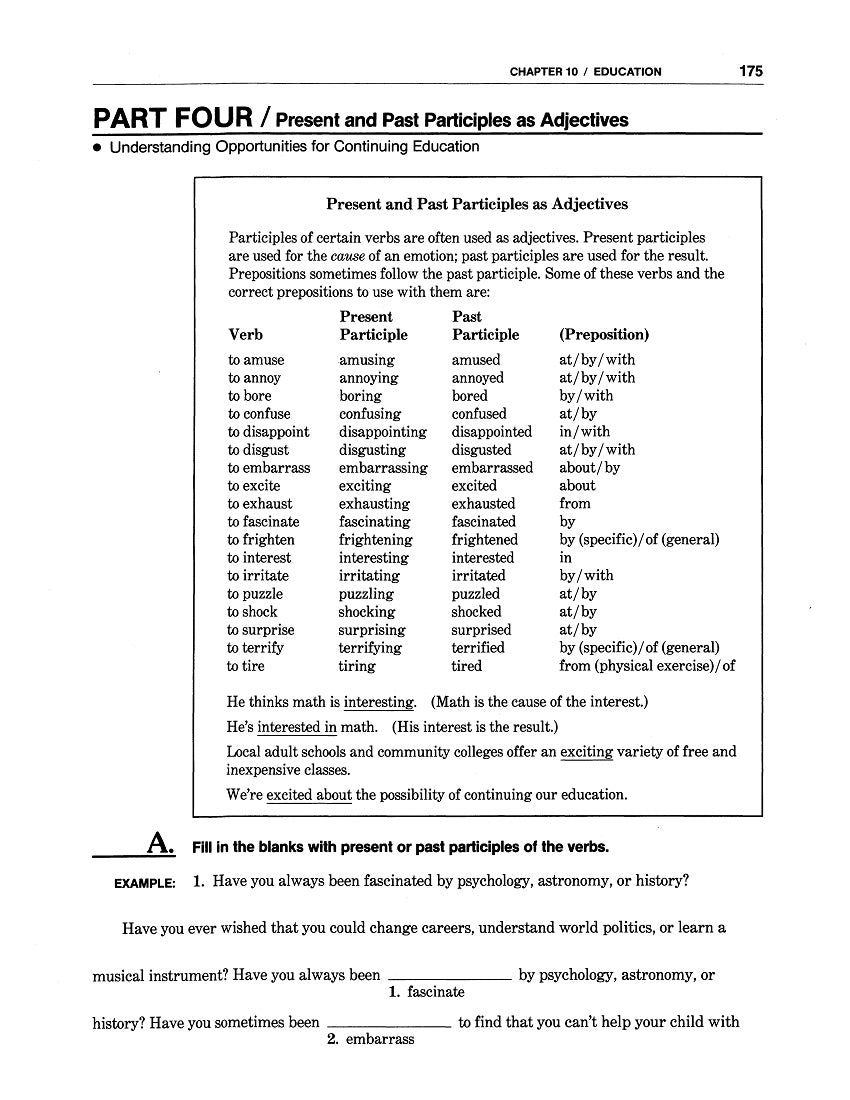1
/
of
6
Work/Life English
D-14.01 Passive Voice Verb Tenses
D-14.01 Passive Voice Verb Tenses
Regular price
$5.00 USD
Regular price
Sale price
$5.00 USD
Unit price
/
per
Parts One to Four of Chapter 10: the Passive Voice (“Education”) of WorkLife English Grammar 4: Cross-Cultural Communication, pages 163-180
18 pages
Who It’s For: Teachers, Helpers, & (High) Intermediate English-Language Learners Ready to Augment Study of Verb Tenses & Aspects with Another Voice (the Passive)
Why It’s Useful: “Typical examples” of most grammar instruction for (oral) language-skills development are in the Active Voice, which means that it’s Sentence Subjects that do the acting (perform the actions of the verbs). Its opposite is the “Passive Voice,” in which subjects are acted upon (sometimes by an agent.) For illustrations of the difference, compare the active “I ate” with the passive “I was eaten (by a wild beast?).”
A grammar topic related to “Passive vs. Active” is “Past vs. Present Participles as Adjectives,” as in “People are terrified by terrifying news,” which means “The news is terrifying,” so it terrifies people, who become terrified.” Part Four of the Chapter 10 Download presents and practices these modifiers—after coverage of Simple vs. Perfect (Continuous) Present, Past, & Future Passive Forms & Patterns in Parts One-Three.
What You’ll Do:
[1] In the page 163 Chapter Opener, get yourself into the Passive by noting that “A map was drawn on a board; elements of Verb Tenses have been listed under Grammar; aspects of schooling are included under Competencies related to Education.” Noticing the “educational-speech” context on the next two pages, “warm up” by correcting its grammatical errors and checking your work.
[2] In Parts Two & Three on pages 170-172 & 173-174, follow equivalent instructions to learn about “the Passive Voice: Continuous & Perfect Tenses; Impersonal It; Future Tense & Modals.” In Exercises A-*C in each section, practice their forms, patterns, and meanings with material about Learning Disabilities and Gifted Children.
[3] Complete Chapter 10 with Part Four on pages 175-178. With pedagogy and vocabulary lists, it offers practice in choosing Present vs. Past Participles—both in Verb Phraseology and for Adjectives that modify Nouns or follow Linking Verbs.
Couldn't load pickup availability
